Harris Switch Tower Museum
Introduction
Text-to-speech Audio
Images
The Harris Switch Tower is now dwarfed by a seven-story structure that houses the U.S. Social Security Administration and the Division of Vital Records.
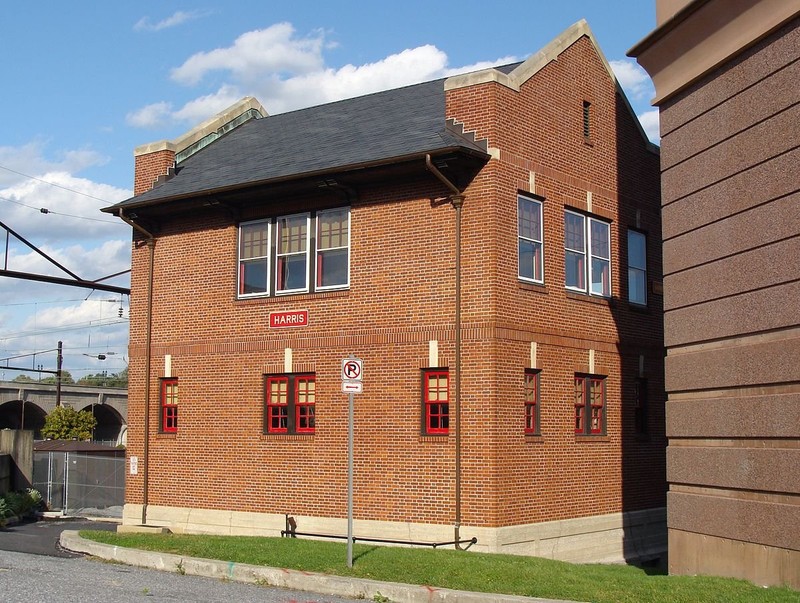
The tower as seen from the track side.
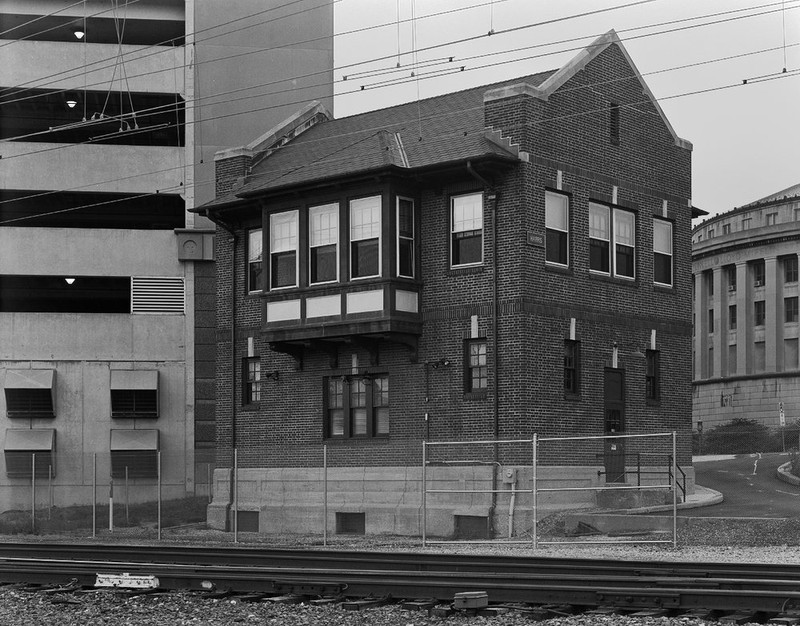
The operator's desk with interlocking machine and model board in the background.
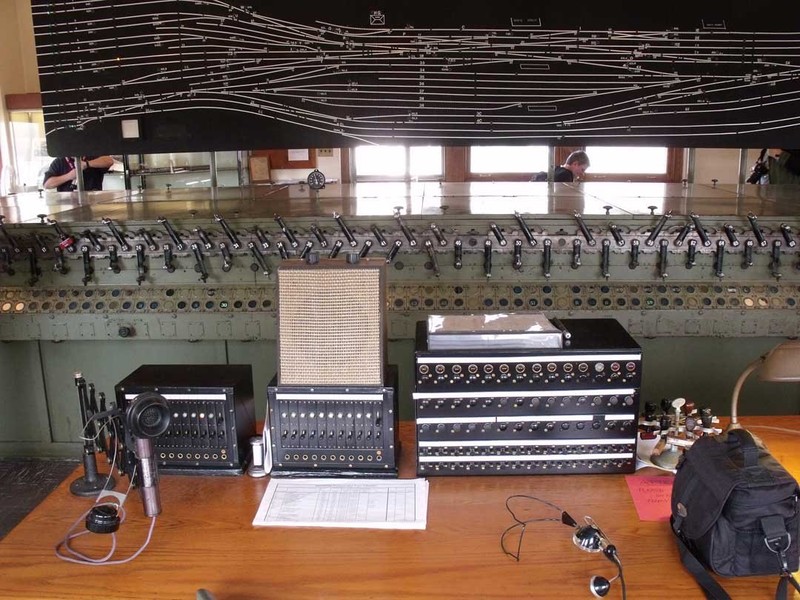
A close-up of some of the interlocking machine's 113 levers.
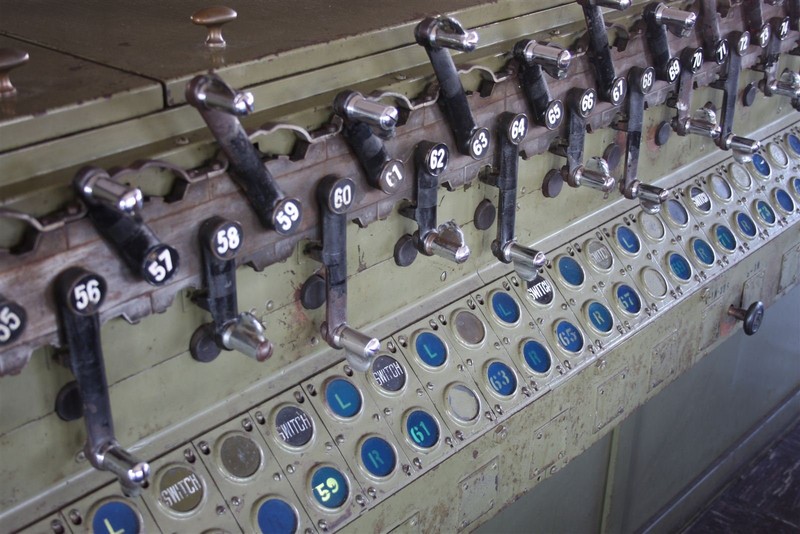
A few railroad aficionados train spotting from the second floor of the Harris Switch Tower.
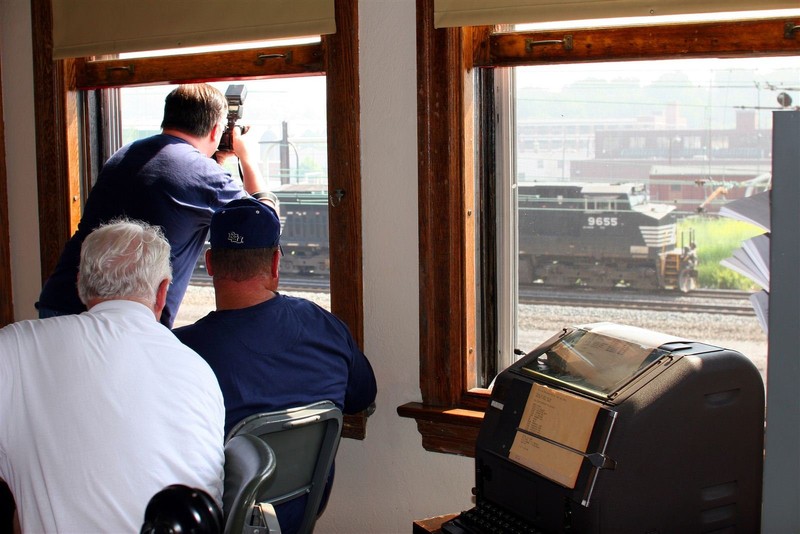
Backstory and Context
Text-to-speech Audio
The method for controlling where trains went and at what speed has gone through numerous safety advancements since the first steel wheel rolled over a set of tracks. Initially, train crews used the simple “smoke signal” method in which they kept watch for the smoke from other oncoming trains. Obviously, this method had serious limitations as the number of trains and track mileage increased. Eventually the “block system” was created in which tracks were divided into “blocks” or sections with only one train being permitted access to a specific block at any one time. Each block had a signal at each end that was mechanically controlled via human power and later, by electric and electro-pneumatic power.
An important safety feature, in the form of interlocking machines, was first applied in America in 1877 and this machine was improved by the Union Switch and Signal Company with the widespread use of electricity later in the 19th century. These machines permitted operators, at a centralized location, to control large sections of track and multiple trains. Through the use of numerous levers that connect to steel bars, the operator was able to control switches and signals over a large area. The steel bars within the machine would interlock with one another to prevent conflicts, such as two trains on one track, from occurring.
The Harris Switch Tower, one of the last built in the country by the Pennsylvania Railroad, went into operation in 1930 and controlled a 4,000-foot long, 15 track wide section near the Harrisburg Station. The nearly square, two-story brick structure was built in the Colonial-Revival style with the stories separated by an exterior soldier course belt rail. It has remained largely intact with the only addition being a chimney and oil furnace in the 1980s. It came under control of the Pennsylvania Central Railroad in 1968 and then Amtrak in 1976. During its peak in the 1940s, it controlled the vast majority of passenger trains, local and express, entering and leaving Harrisburg, over 100 per day. Eventually, advances in transportation technology, both within and outside the railroad industry, made switch towers and interlocking machines obsolete and operations at the Harris Switch Tower were phased out in 1991.
Today, the tower is owned by the National Railway Historical Society which restored it and opened to the public as a small railroad museum. Its main attraction is its fully operational (though disconnected) interlocking machine and model board. Visitors are permitted to pull any of its 113 levers and watch how their actions affect the 450 lights on the model board. The machine also features a computer simulation of a Pennsylvania Railroad train schedule from the 1940s with virtual trains visitors must route correctly using the interlocking machine.
Sources
Loser, Matthew et.al. "Harris Switch Tower National Register of Historic Places Nomination Form." United States Department of the Interior/National Park Service. December 7, 1993. Accessed November 3, 2017. http://www.dot7.state.pa.us/CRGIS_Attachments/SiteResource/H096662_01H.pdf
Reynolds, Doug. "Harrisburg Railroad Tower/Switch House Nomination Completed." National Railroad Historical Society. 1994. Accessed November 3, 2017. http://harrisburgnrhs.org/Penndustry.htm
"Harris Railroad Switch Tower Museum Open to the Public." National Railroad Historical Society. Accessed November 3, 2017. http://harristower.org/pdfs/HarrisTowerOpens2012.pdf
Bunty, Bob. "Learning Tower: Experience Harrisburg train history at the Harris Tower Railroad Museum." The Burg News. August 30, 2016. Accessed November 3, 2017. https://theburgnews.com/in-the-burg/learning-tower-experience-harrisburg-train-history-at-the-harris...
